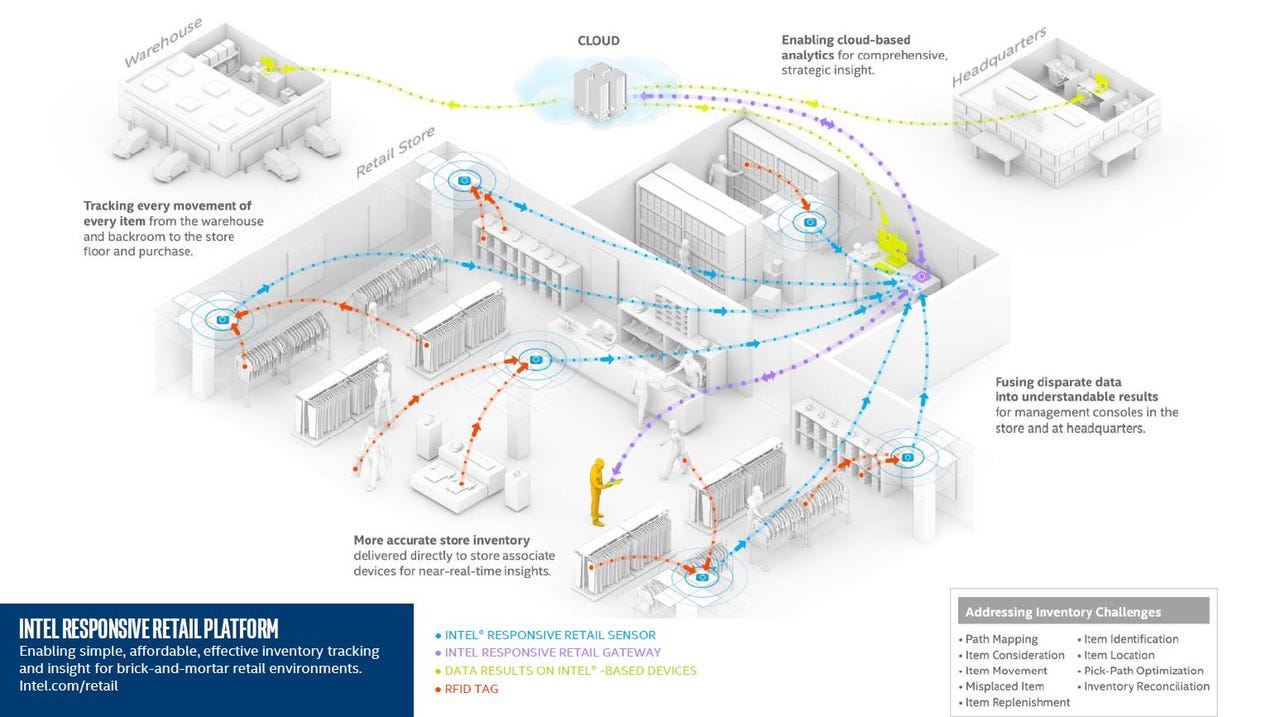Intel launches new IoT retail platform, plans $100 million retail tech investment


Image: Intel
Intel CEO Brian Krzanich spoke at the National Retail Federation's Big Show conference on Monday and announced the chipmaker's latest platform for the retail sector.
Featured
It's called the Responsive Retail Platform (RRP), and according to Intel, it connects disparate islands of in-store technology and makes it easier to develop and deploy Internet of Things (IoT) software and services. Simply put, it works to bring together retail hardware, software, APIs, and sensors in a standardized way.
"Think of it as a Xeon-based multi-tenant processor for the store," said Intel marketing director Ryan Parker, during a pre-briefing on the news.
The core of the platform is Intel's low-power integrated sensor with RFID capability and an expandable sensor suite that allows for the eventual inclusion of other sensors from third-party sensor vendors. The sensors can be used to track inventory and generate in-store data that highlights store activity and customer preferences.
The RRP also includes an open source analytics platform-as-a-service (PaaS) for cloud applications from independent software vendors (ISVs).
The current RRP runs on an Intel Core i7 processor-based gateway, but as more use cases become available, Intel said it will enable Intel Xeon processor-based gateways for better efficiency. The platform is available today through Intel's partner ecosystem.
"This is one of those rare situations where it's a win-win-win," Parker added. "It's a win for Intel, and a win for sensor vendors and ISVs because they don't currently have access to the market. And retailers get a lot of choice."
Intel also announced plans to invest more than $100 million over the next five years in the retail industry. The investment supports Intel's wider efforts to integrate aspects of IoT and other technologies like virtual reality and robotics into retail to address needs ranging from inventory management to checkout.
Krzanich made sure to note that this kind of technology innovation is not intended to displace workers -- a growing concern with the rise of robotics, artificial intelligence and automation in the workplace -- but rather to allow stores to shift human resources to other areas in operations.
"With technology like robots and artificial intelligence to free up employees, every aspect of the store and supply chain will allow retail employees to better focus on the customer and improve the store's performance," Krzanich said. "By bringing together virtual reality and the power of data, we'll help create the store of the future -- one that is smart, responsive, connected and secure."
Also at NRF, Intel is showcasing new technology for on-demand, in-store 3D knitting, real-time clothing and shoe matching platforms, and interactive product displays designed to boost customer engagement.
Why building IoT solutions remains a challenge for developers: